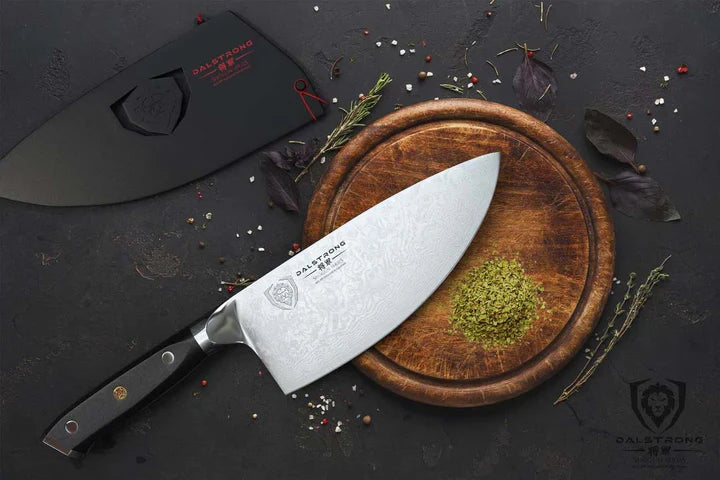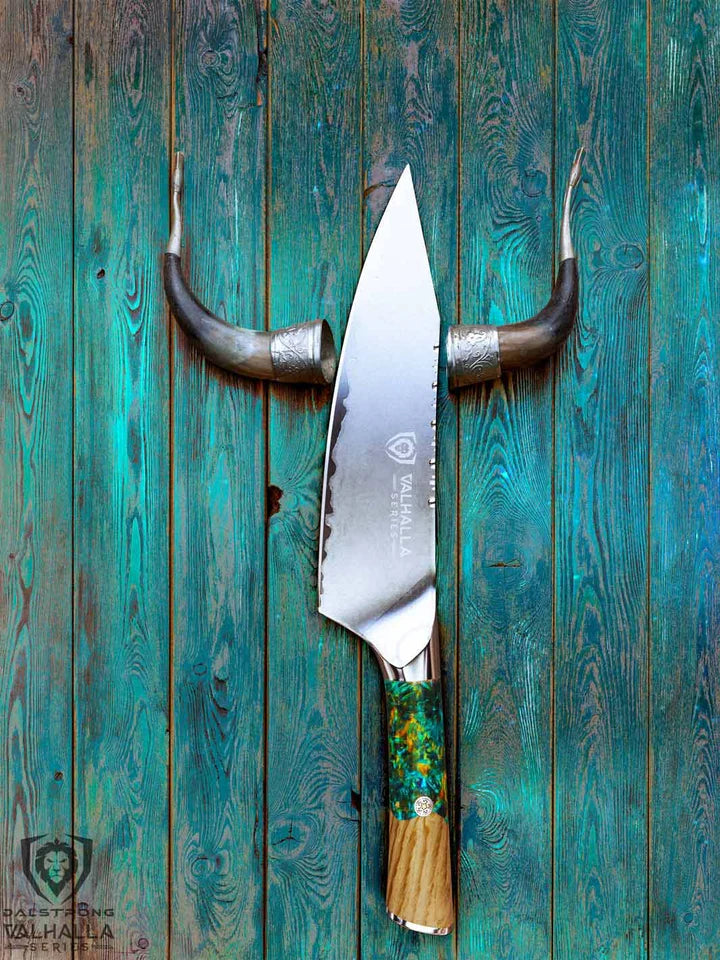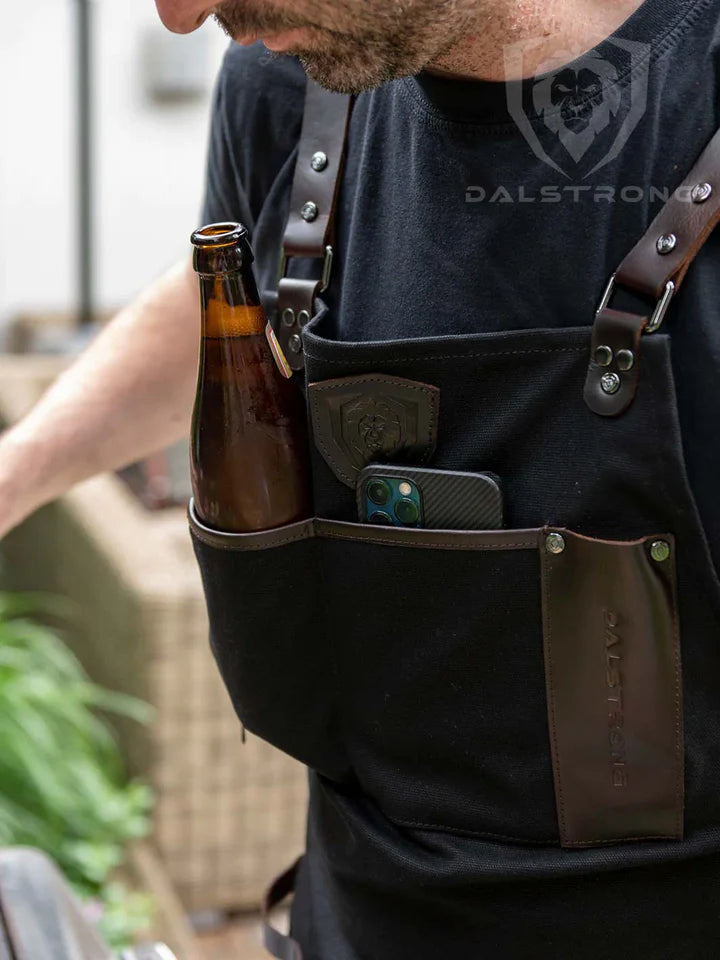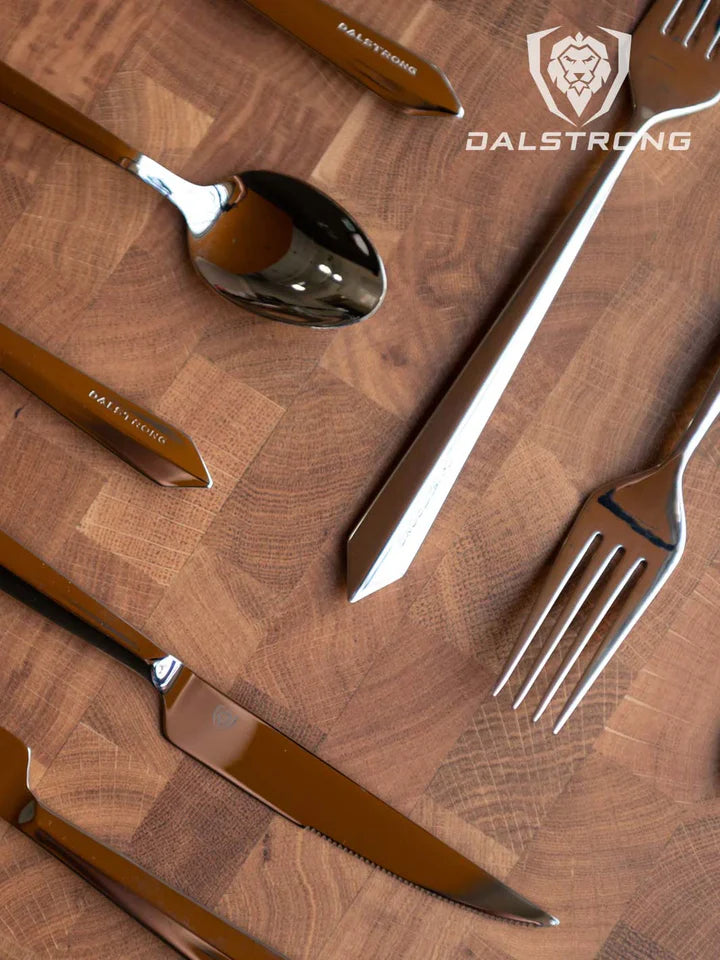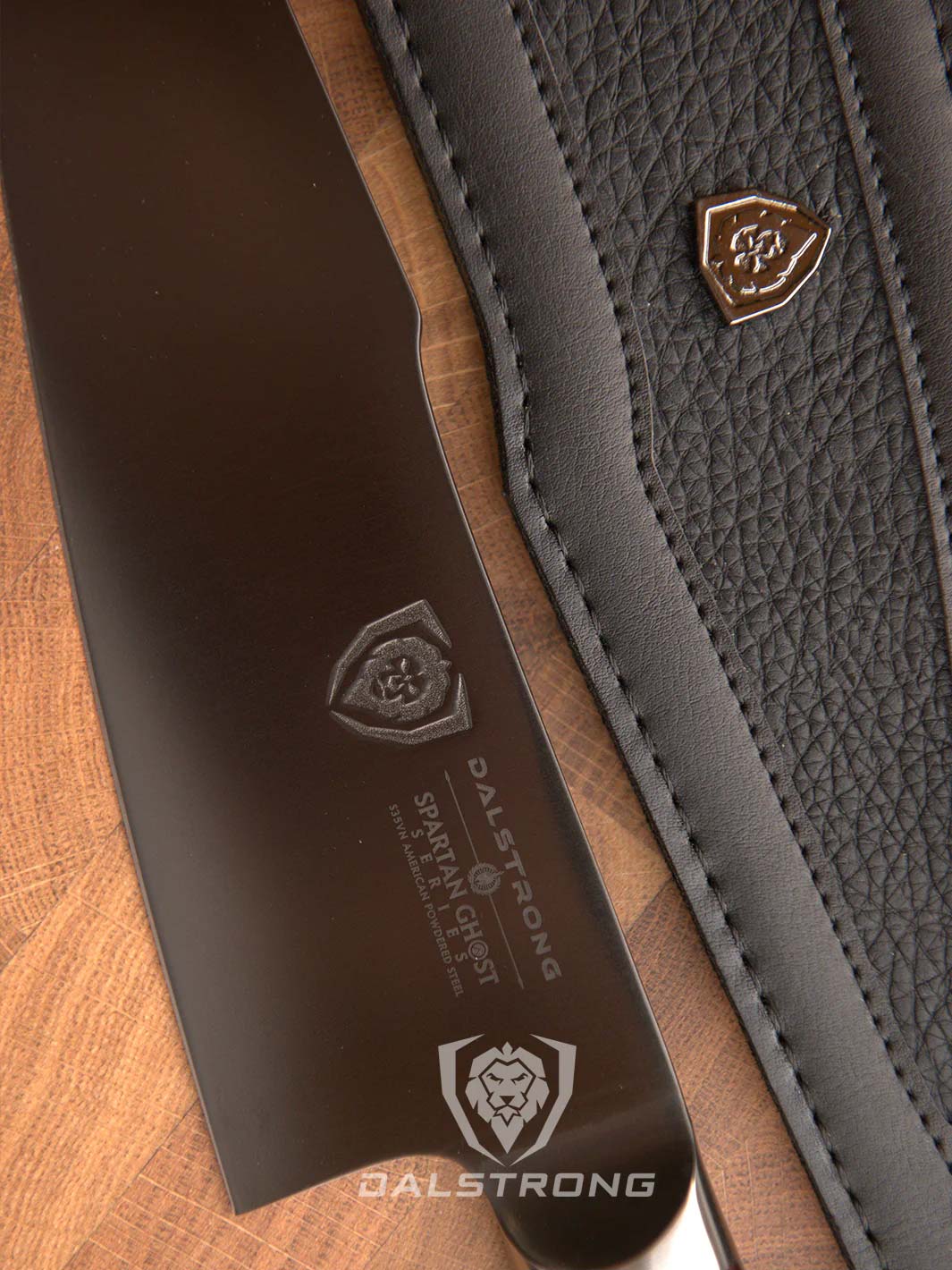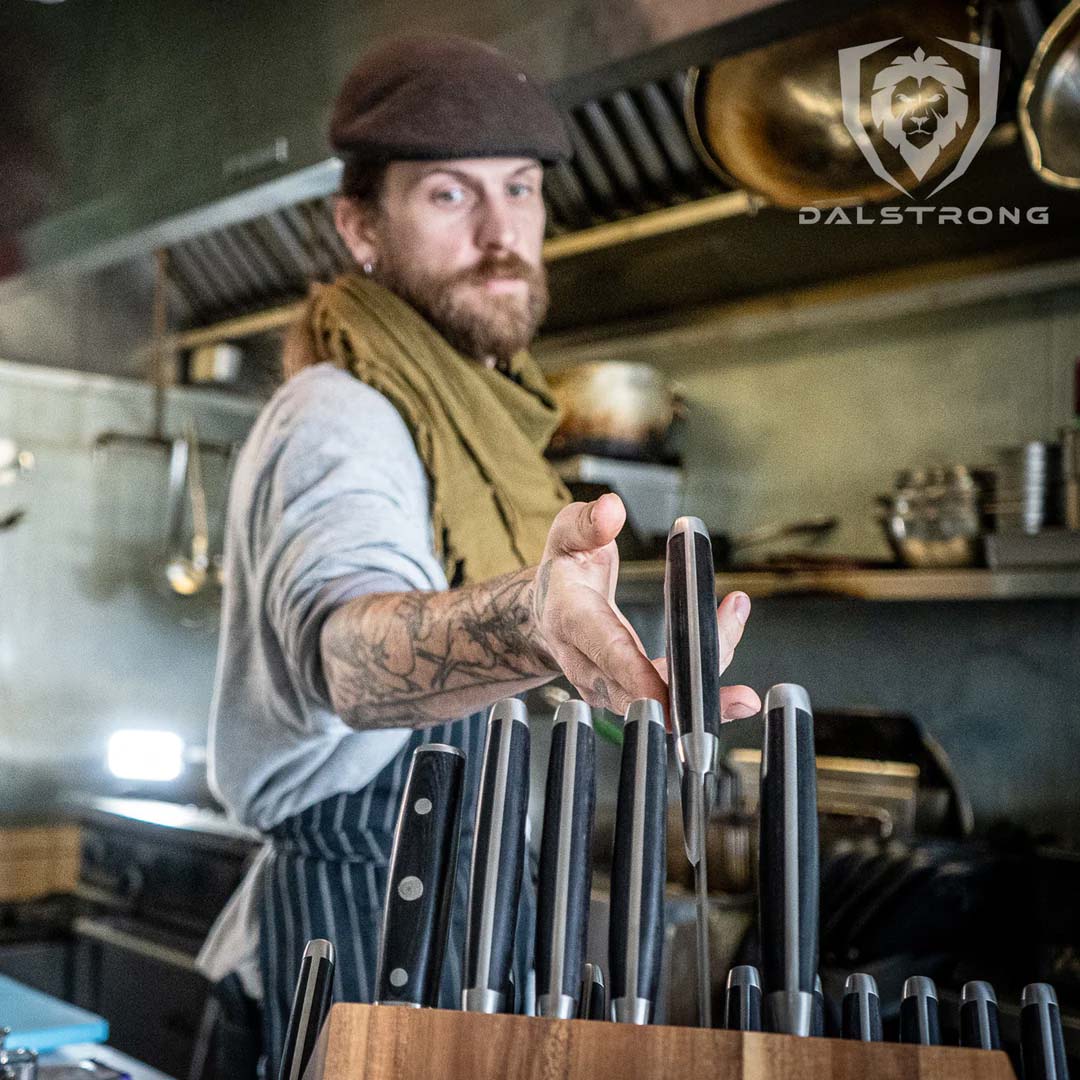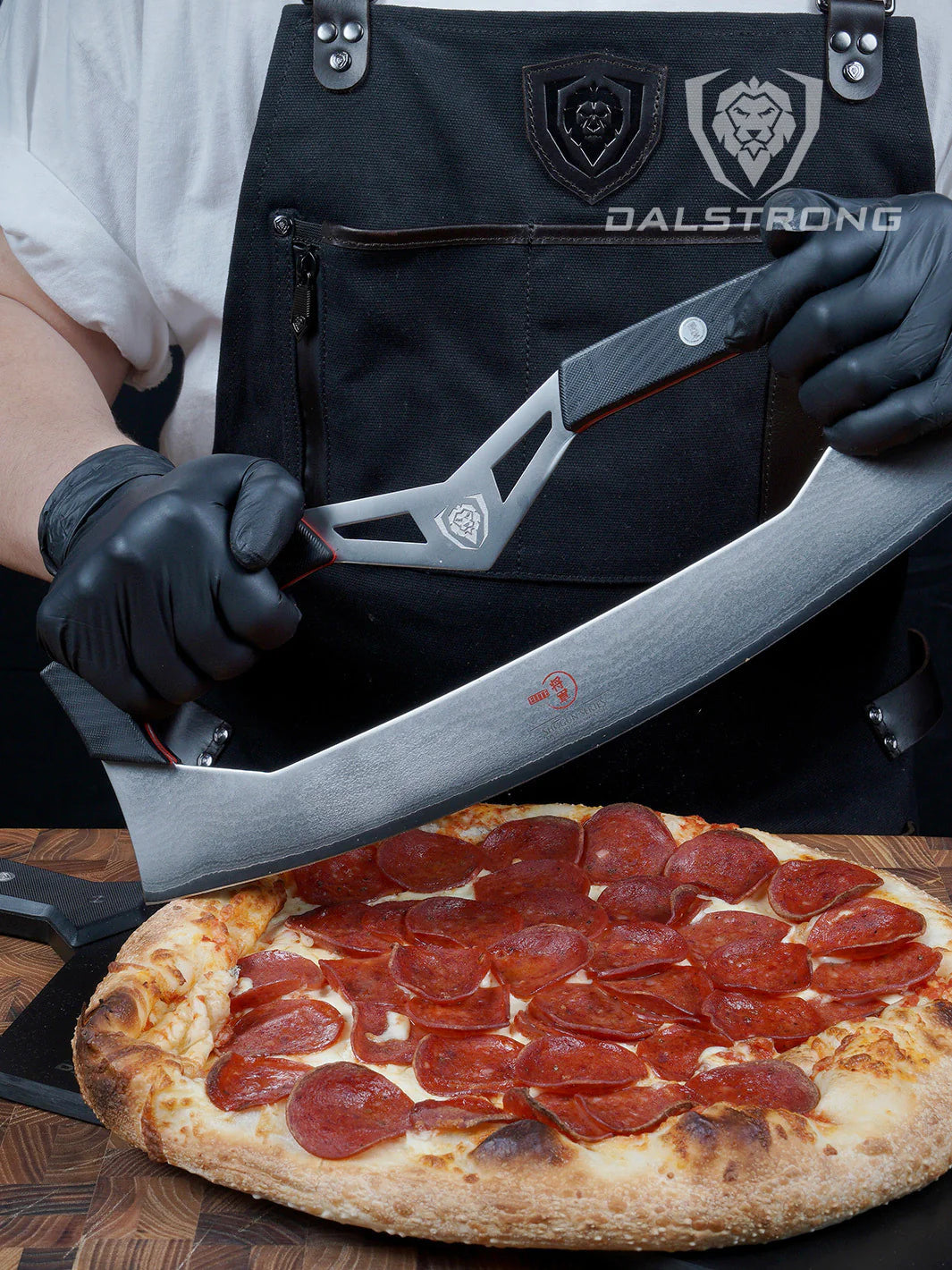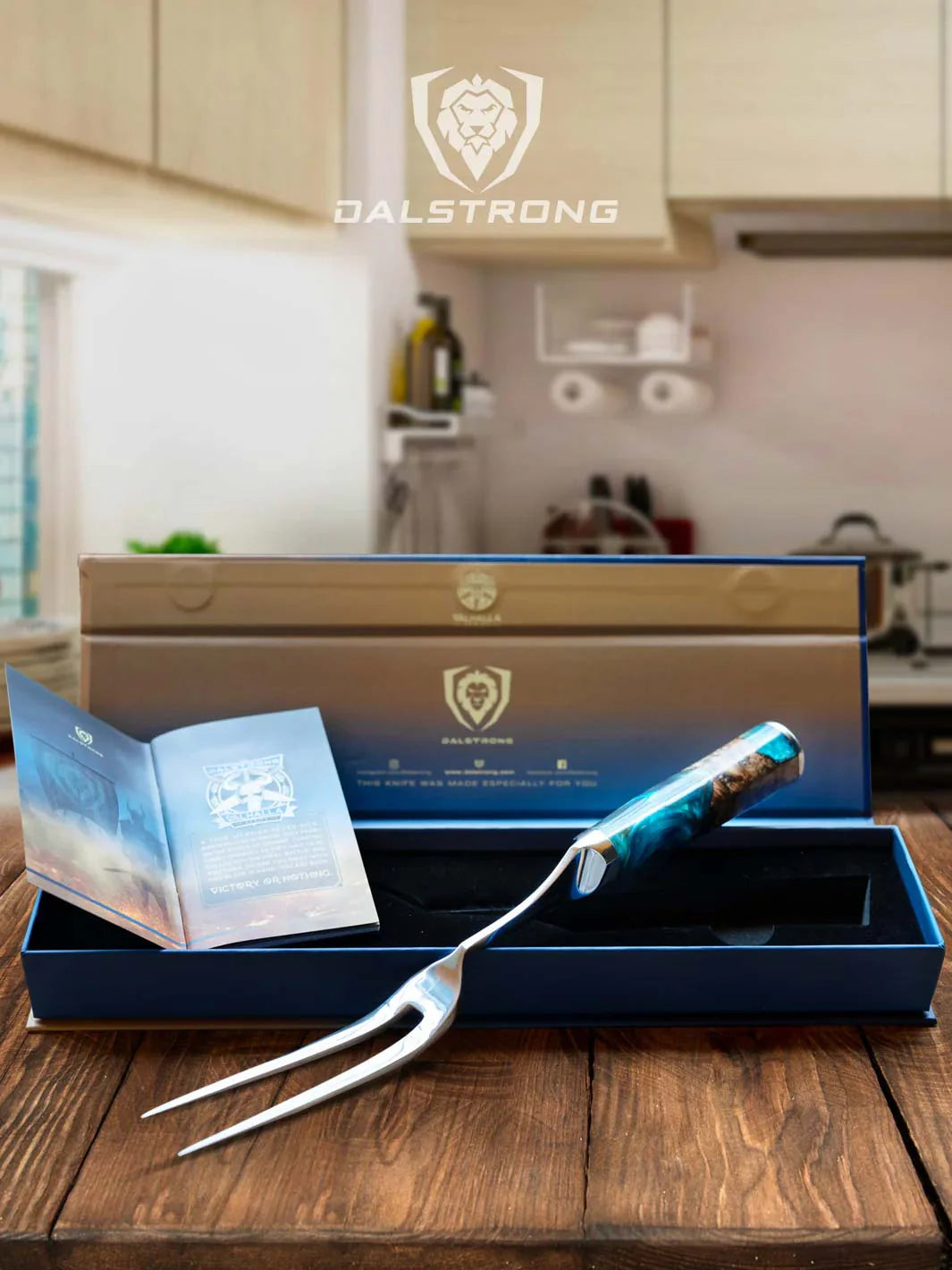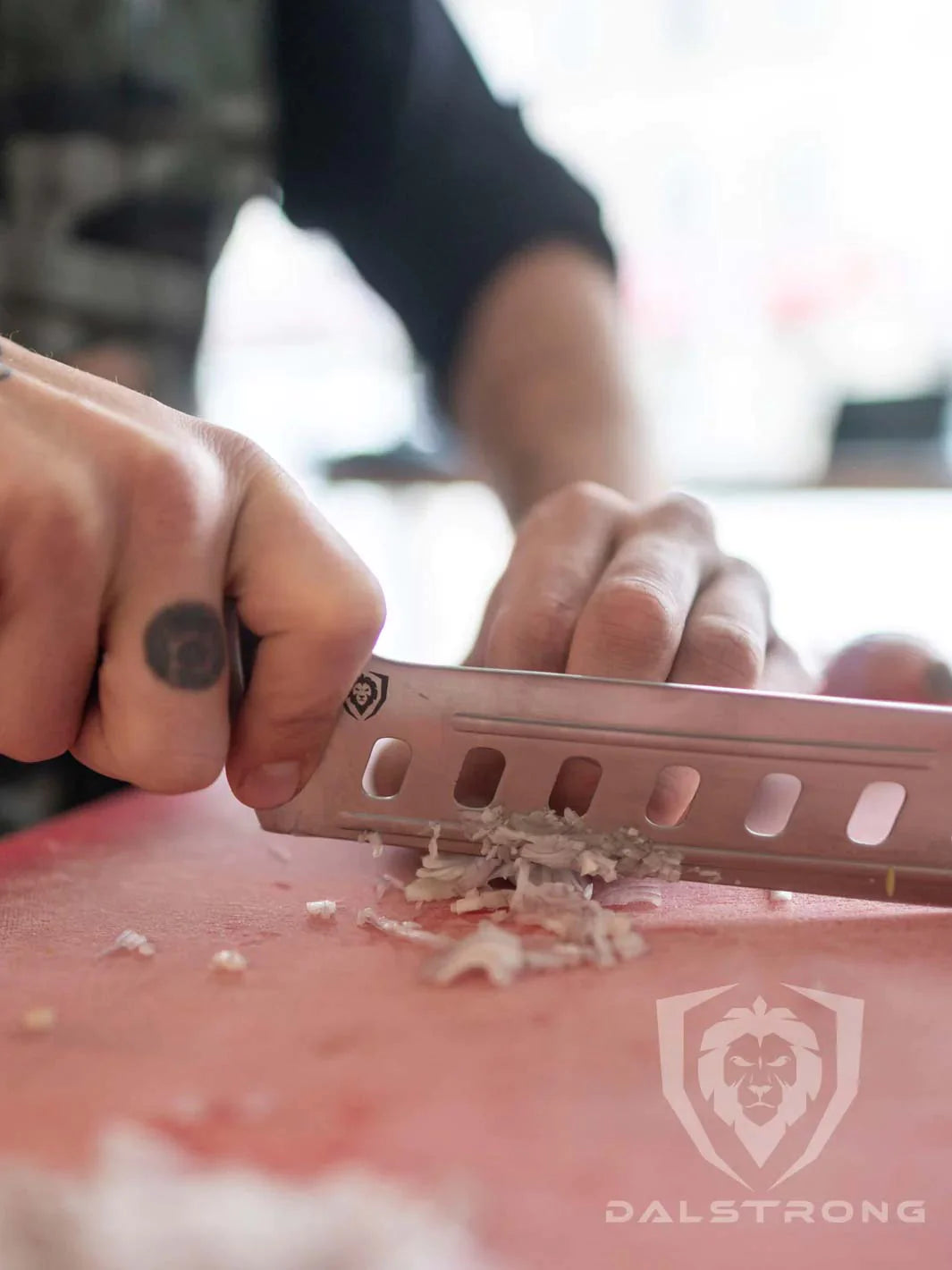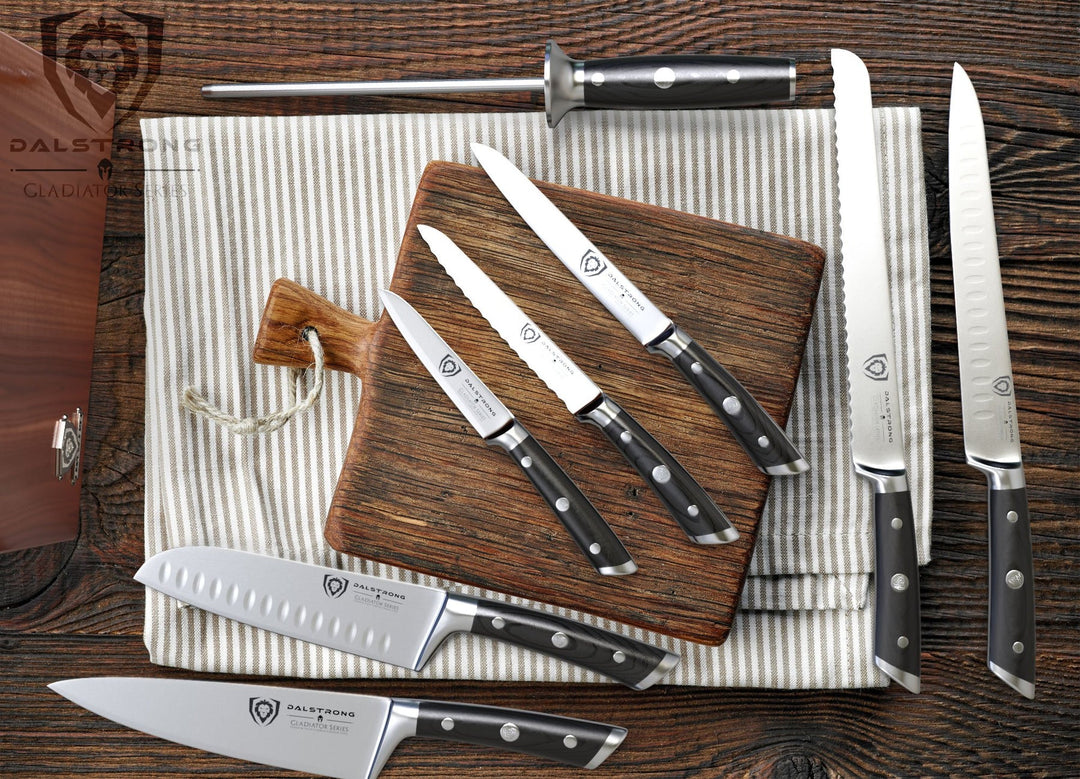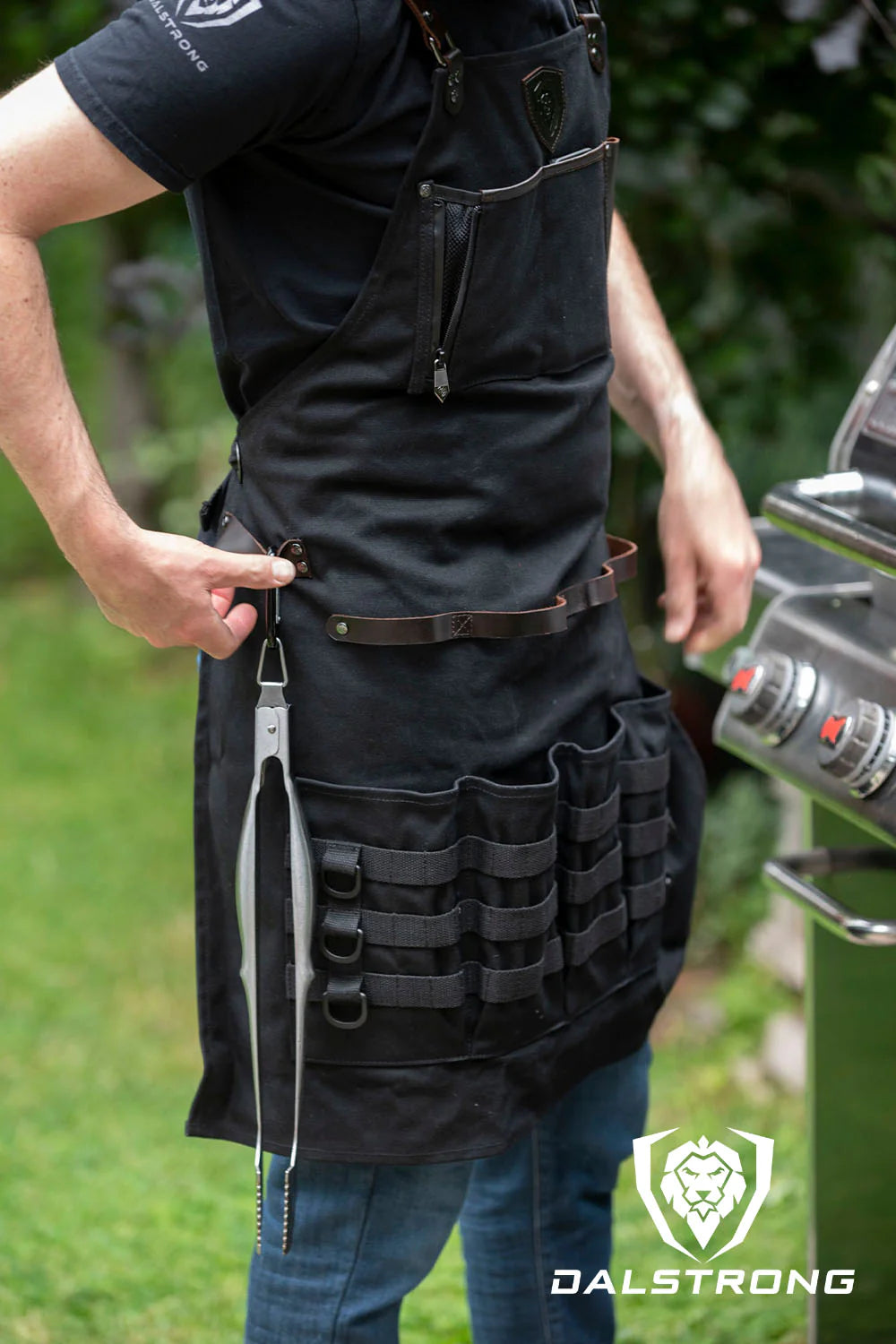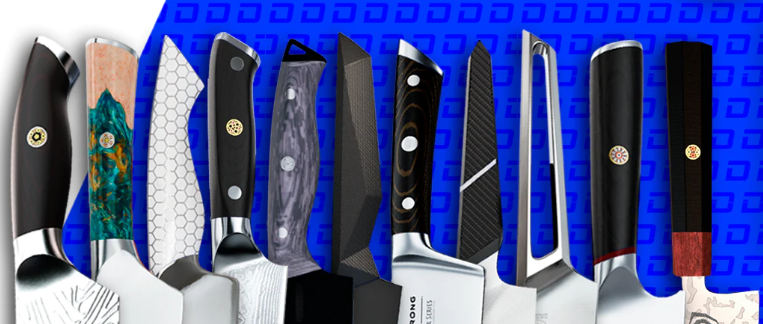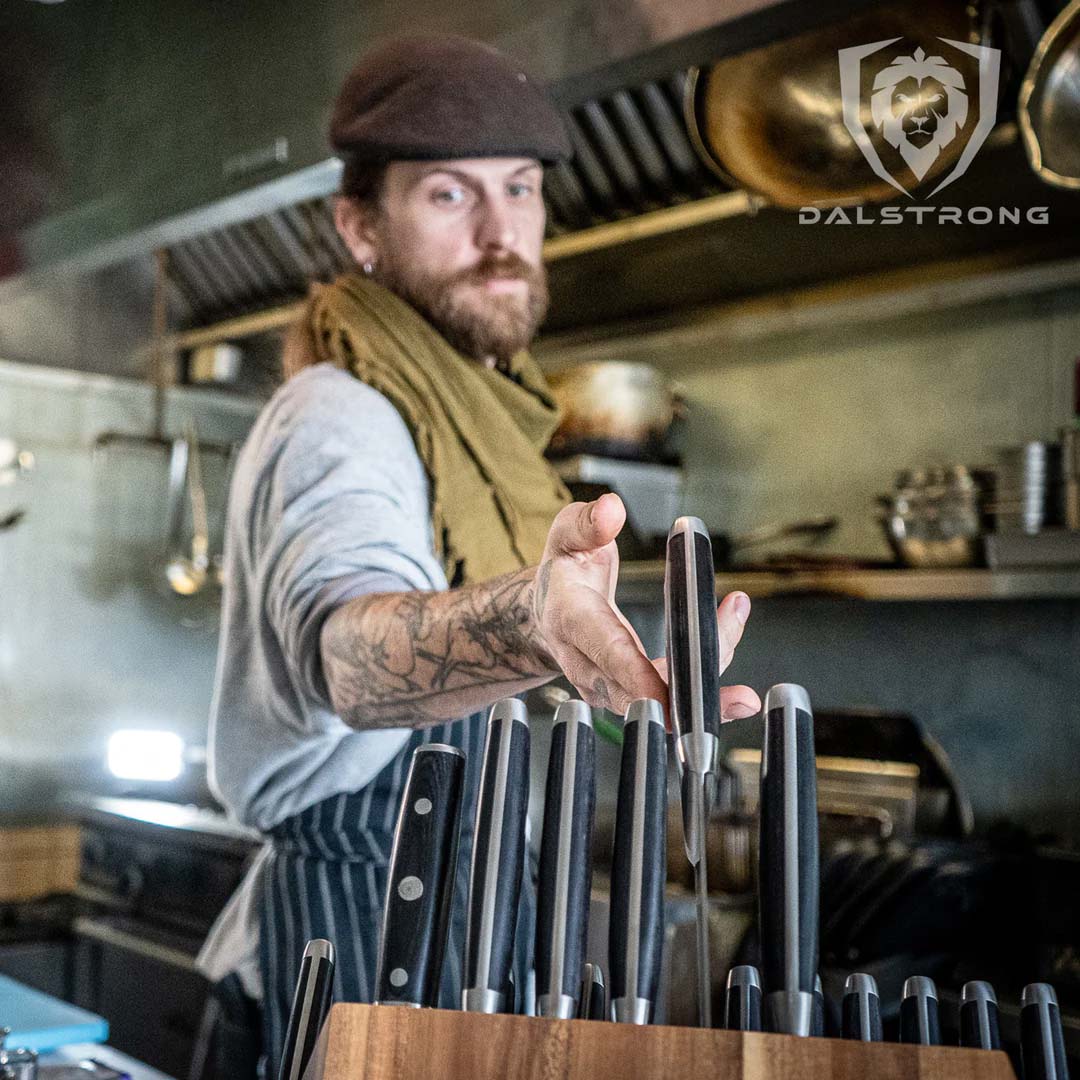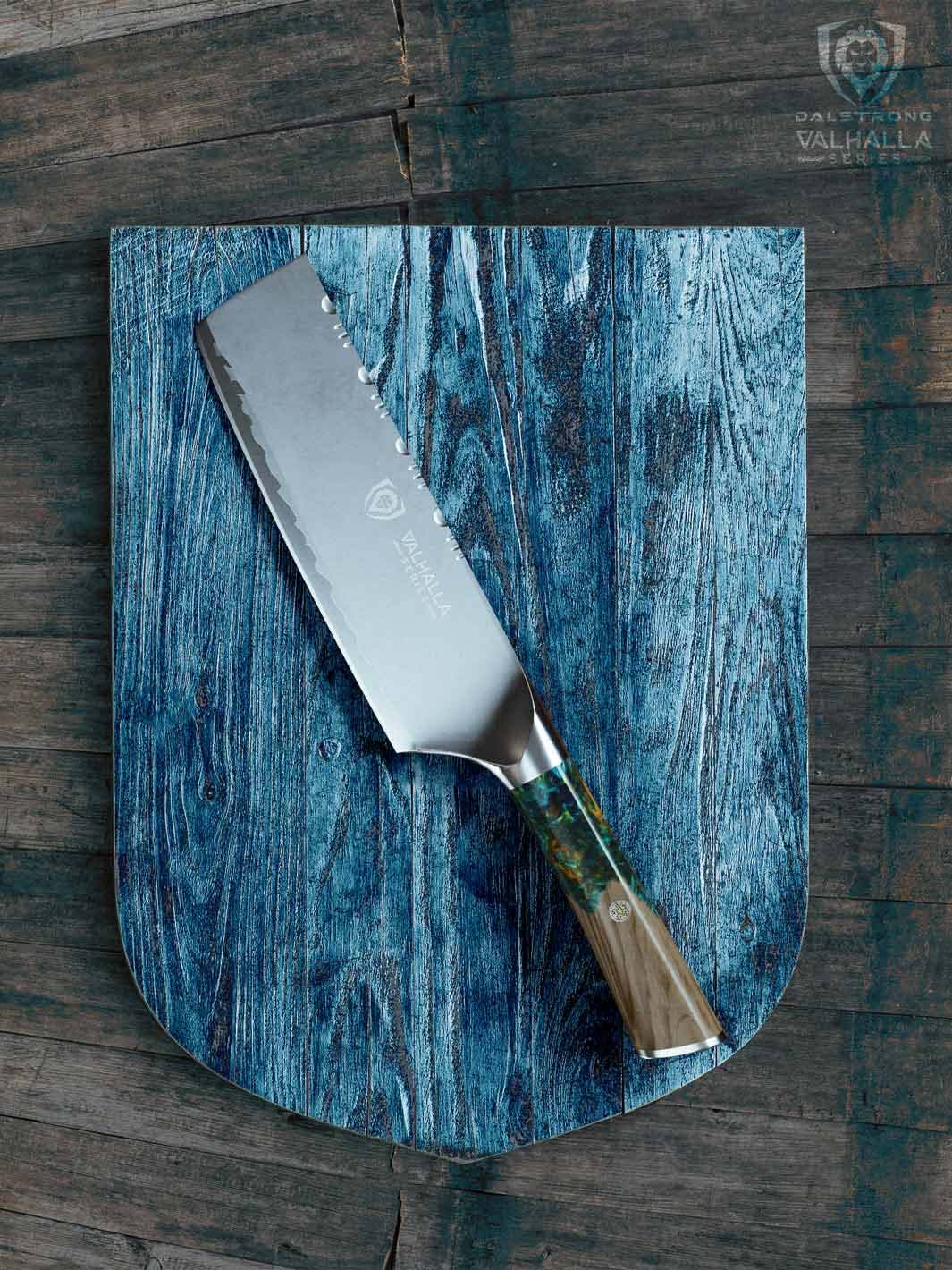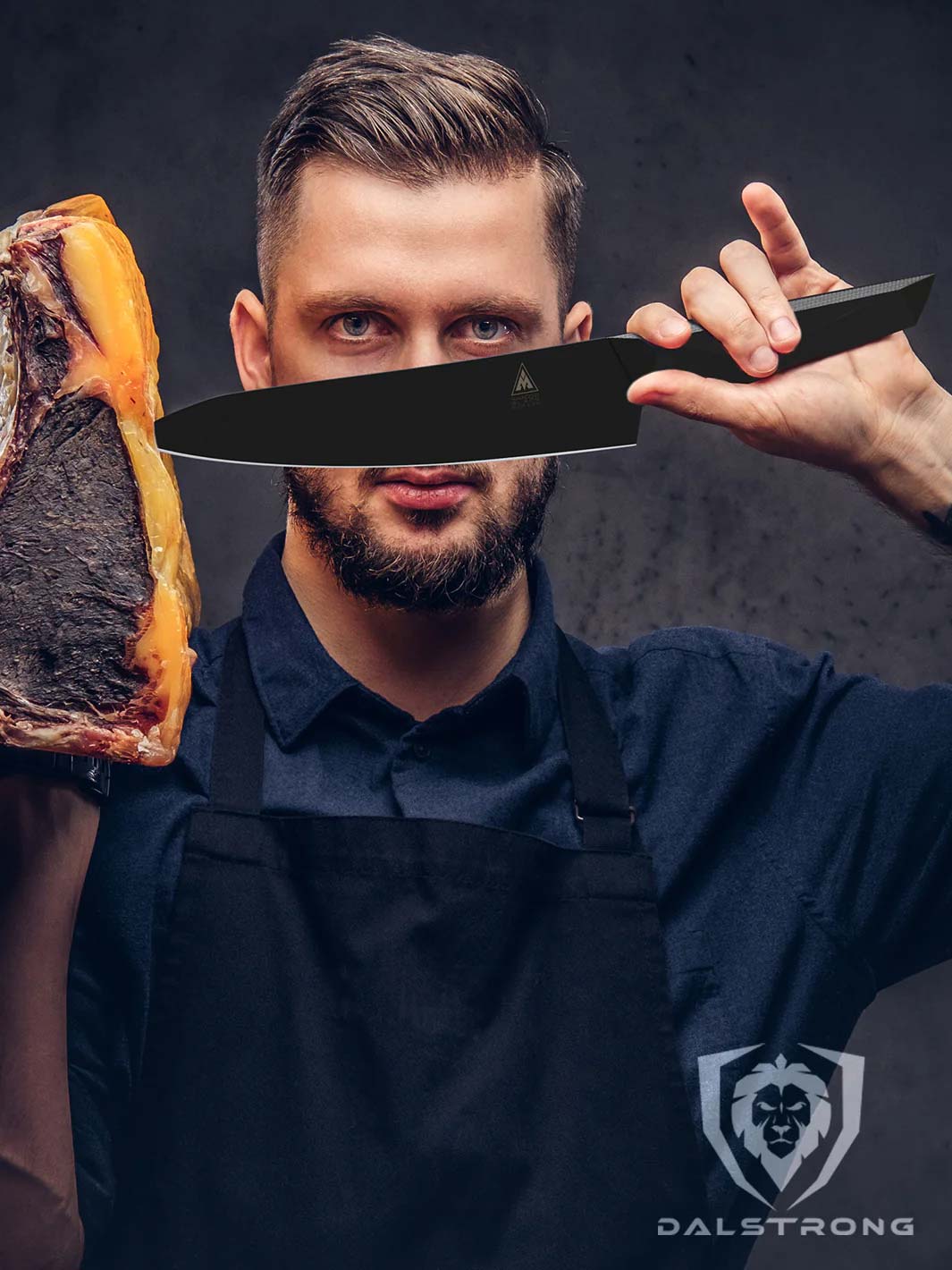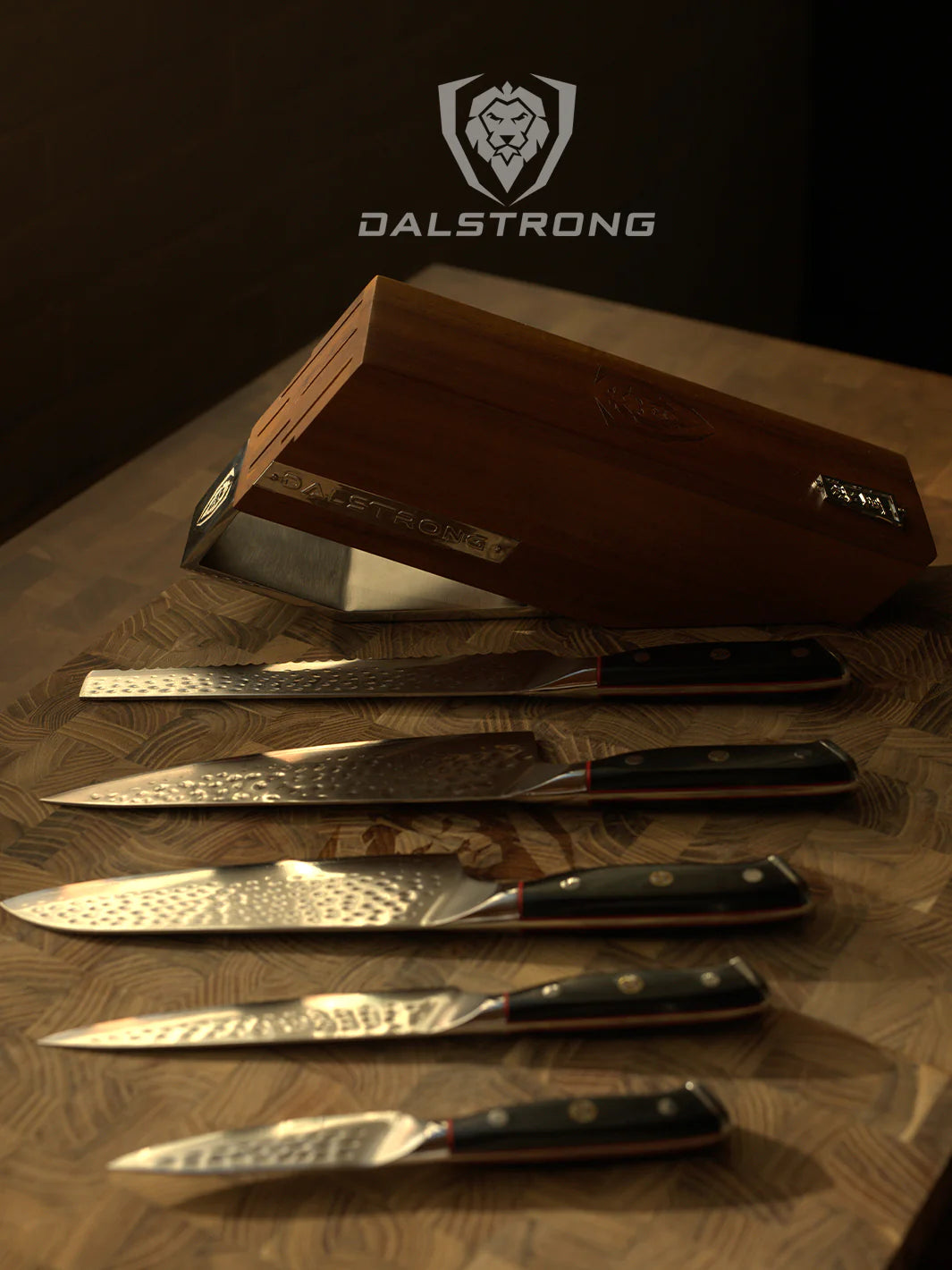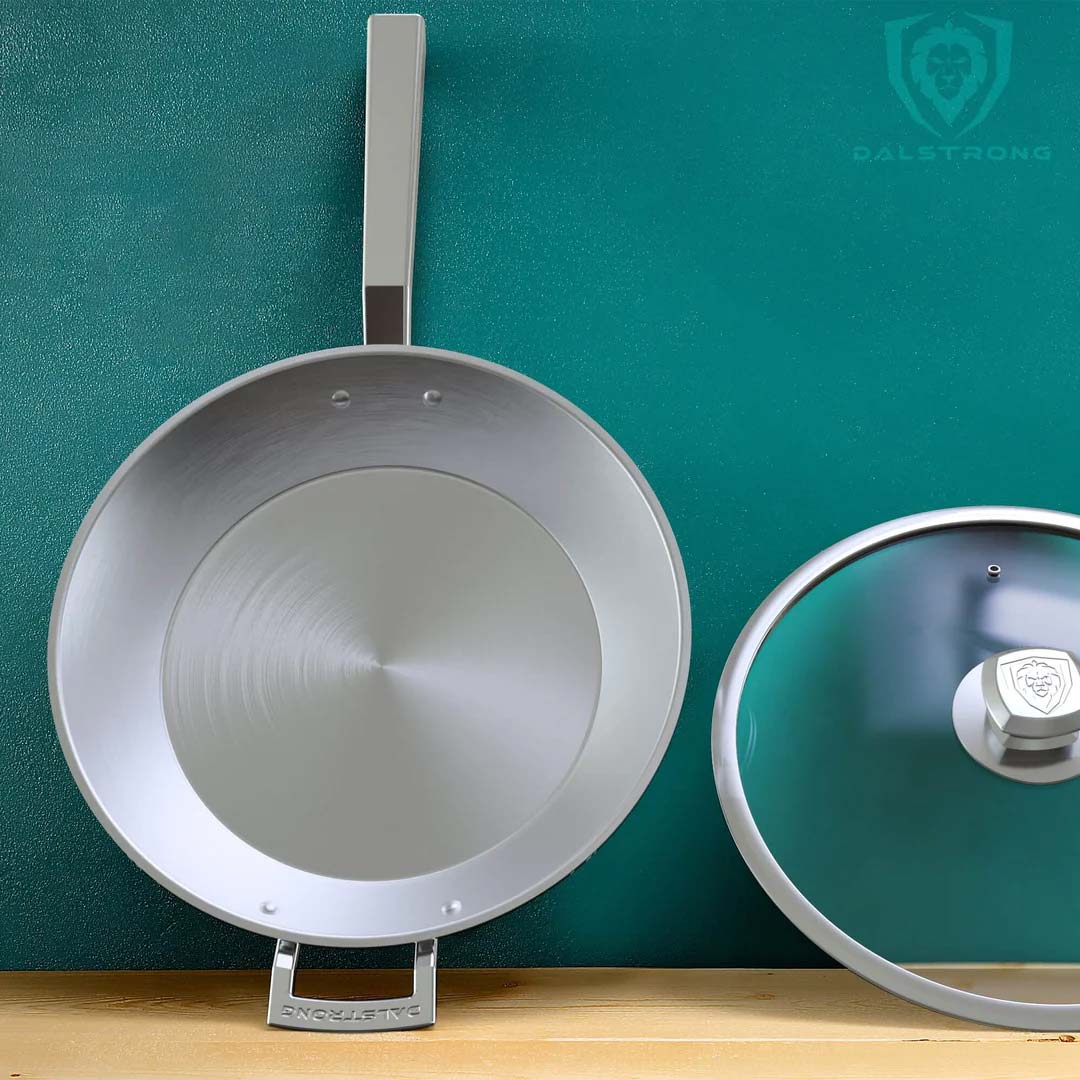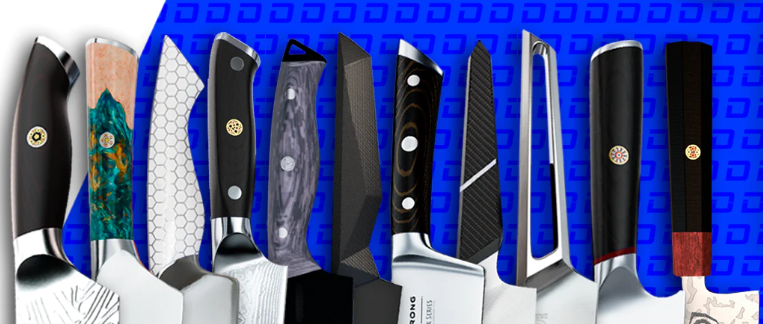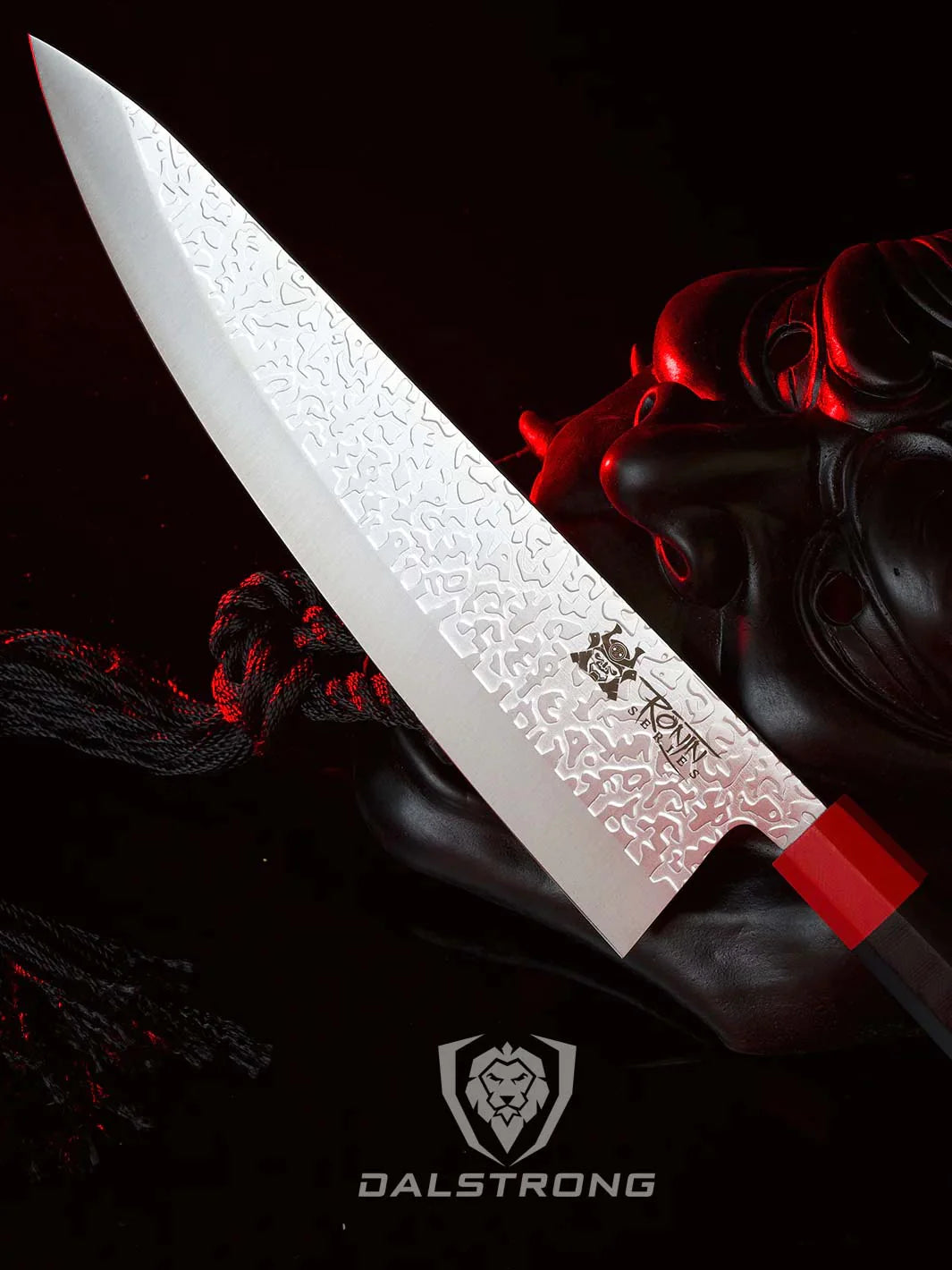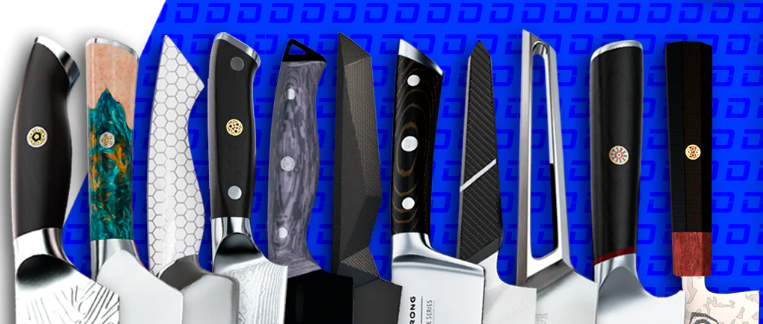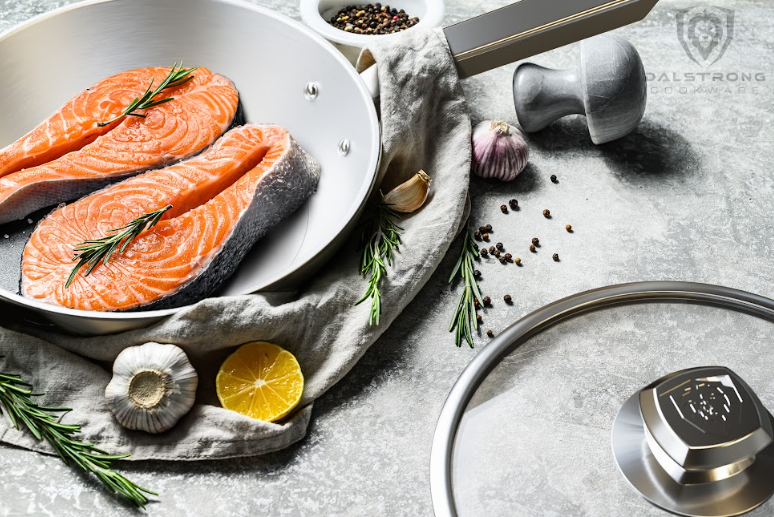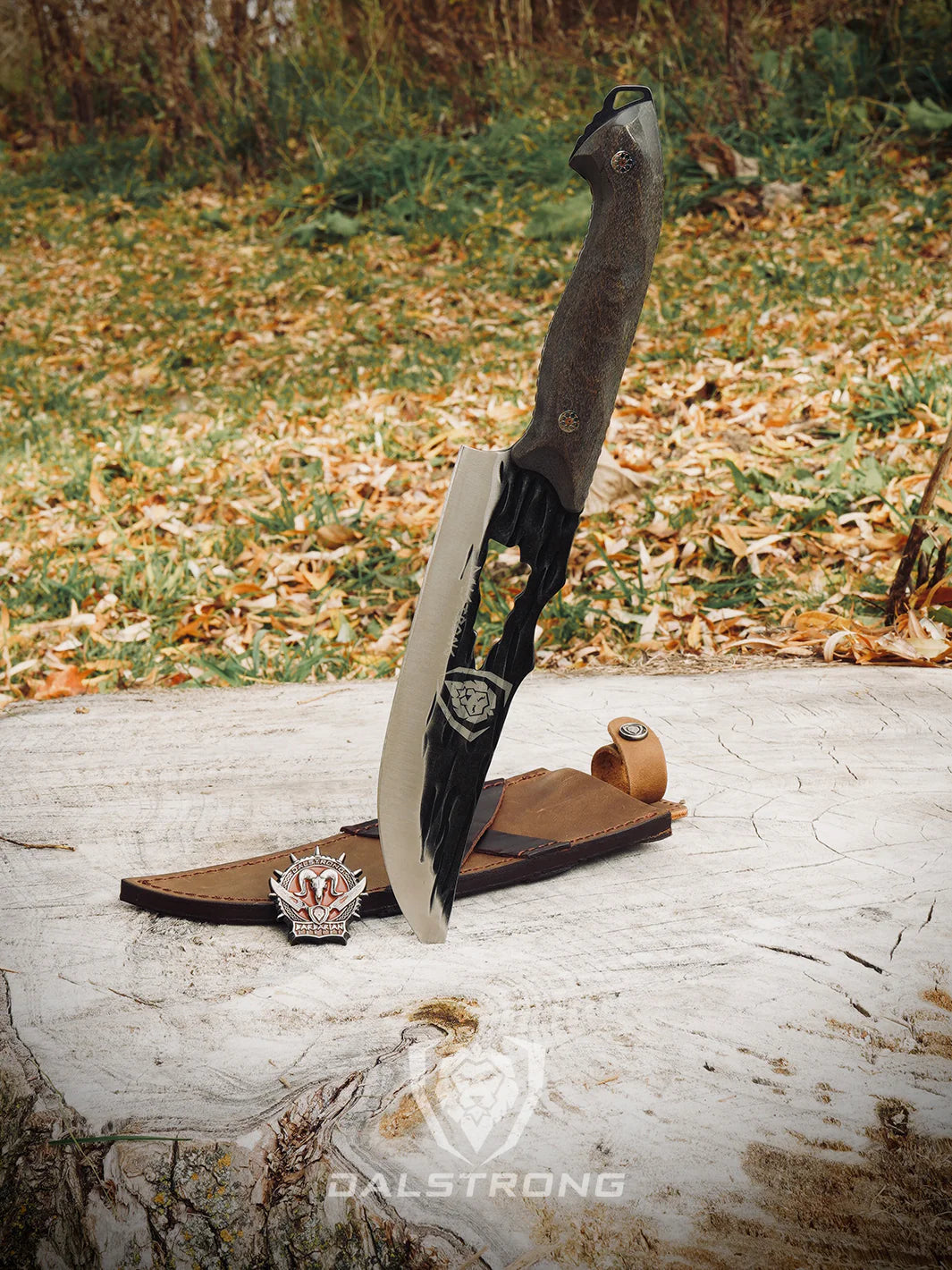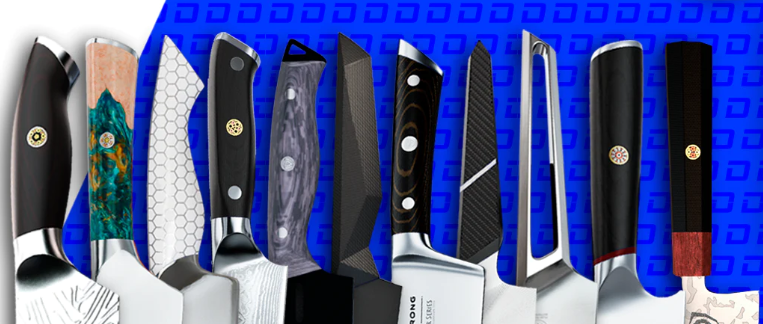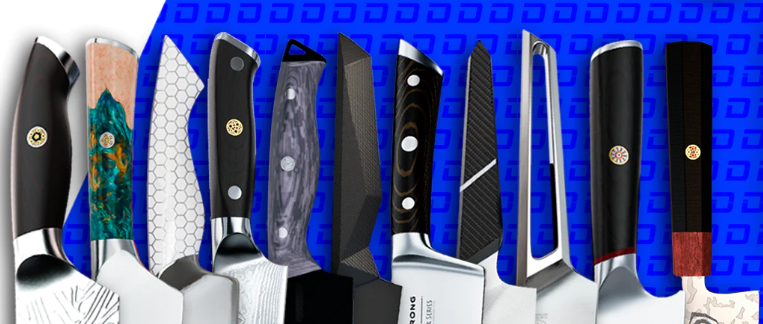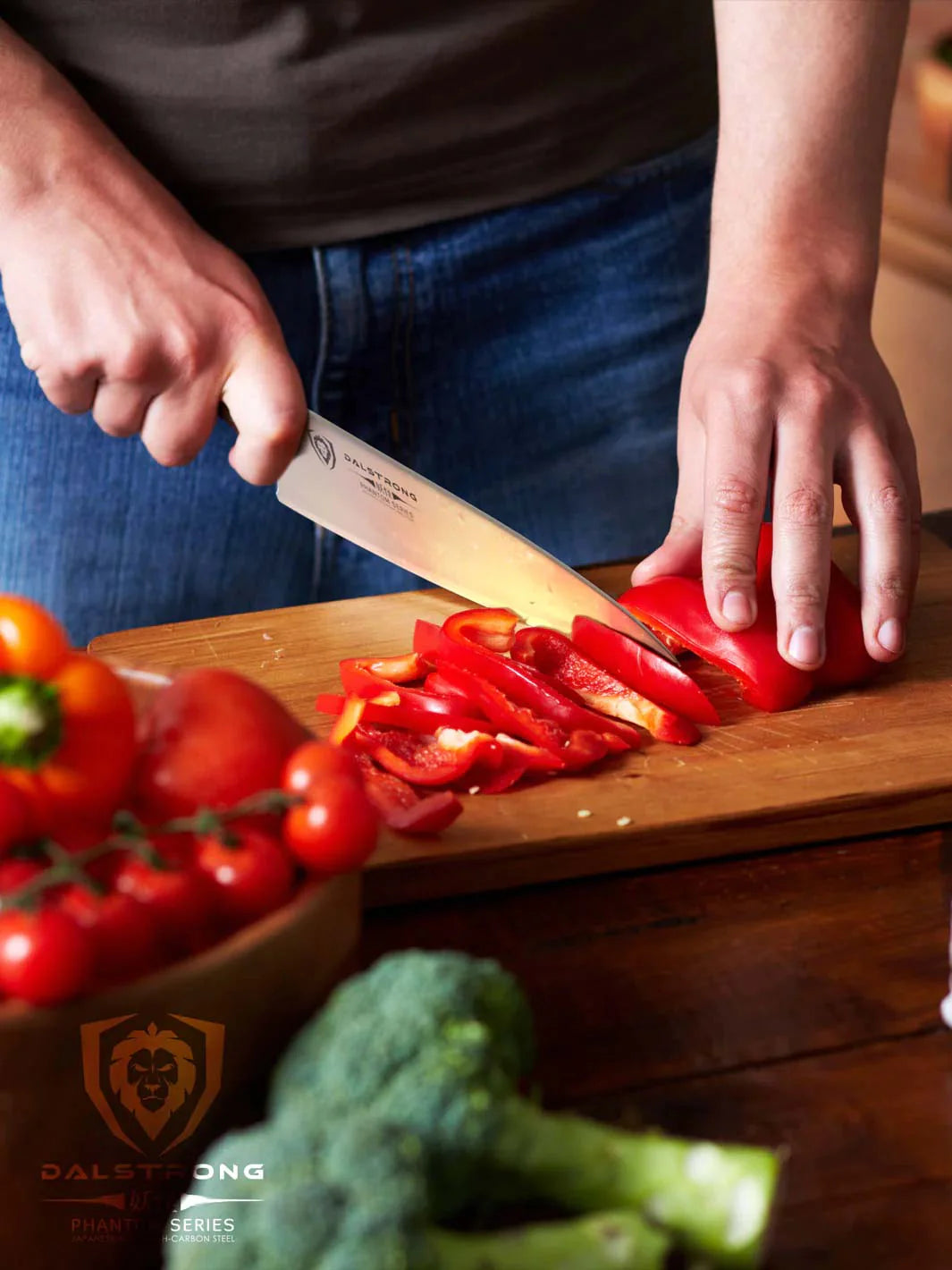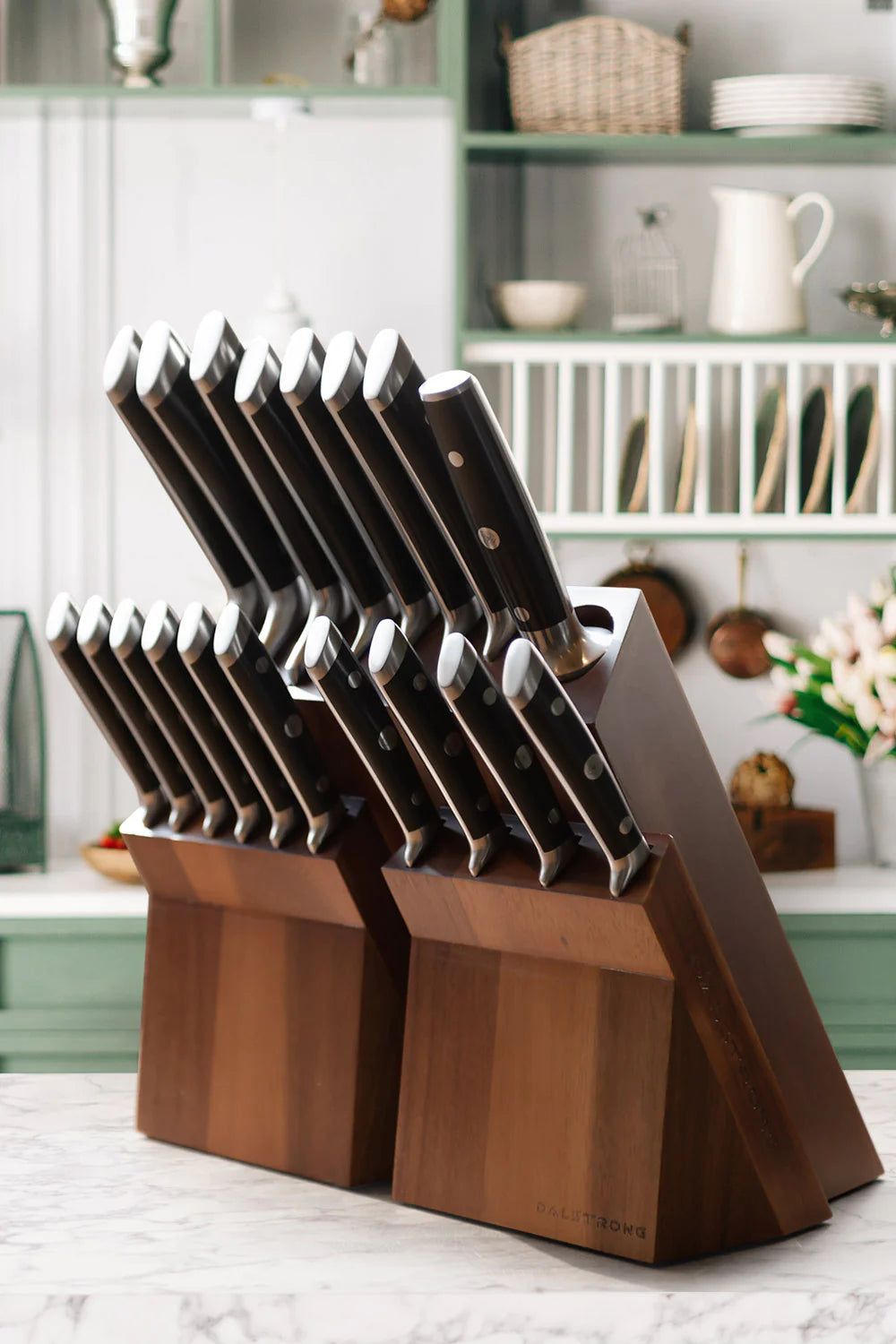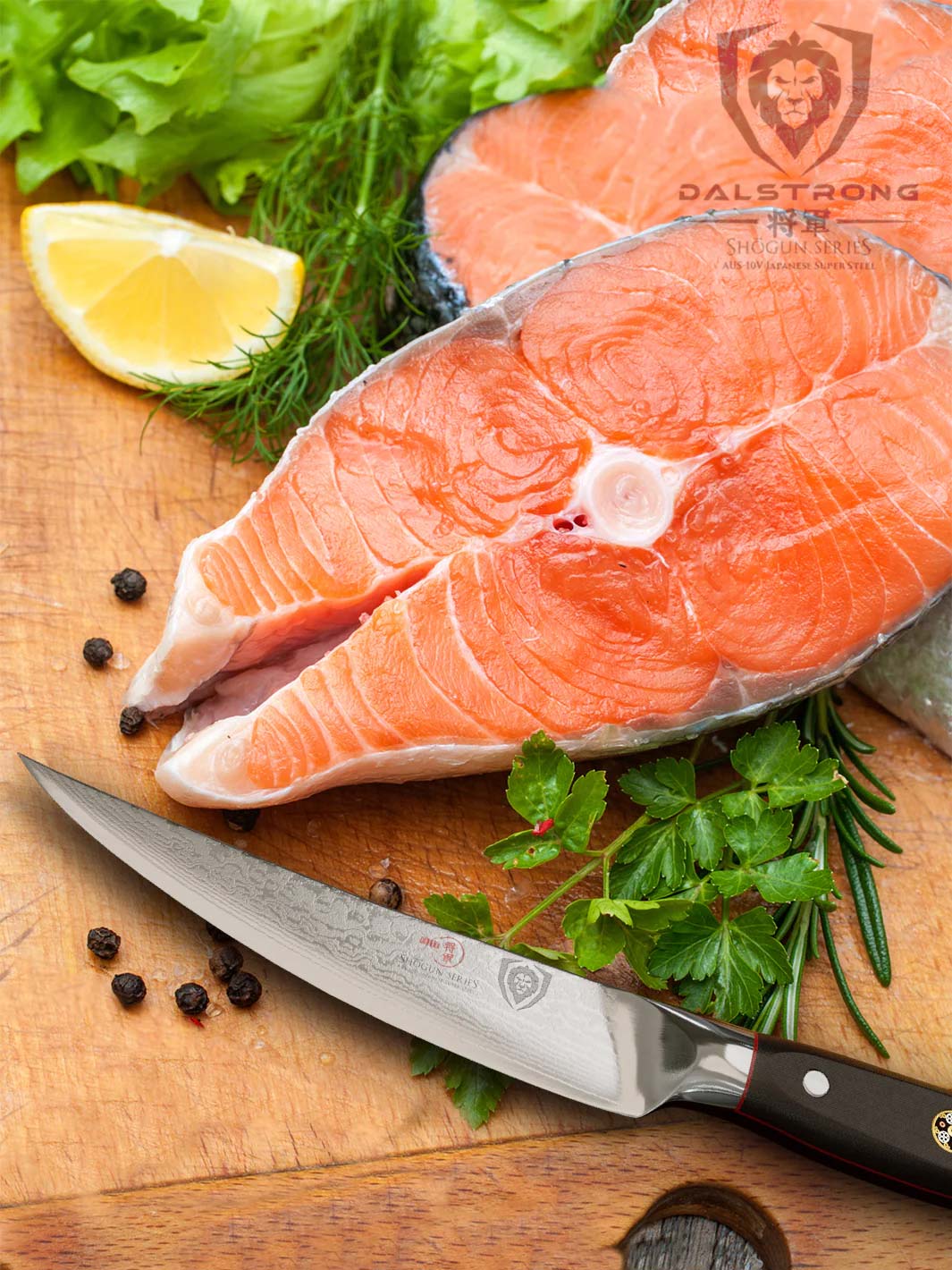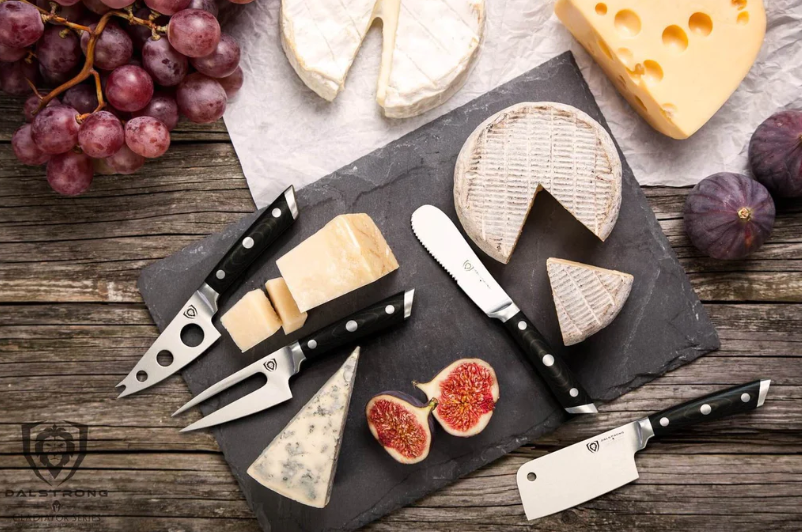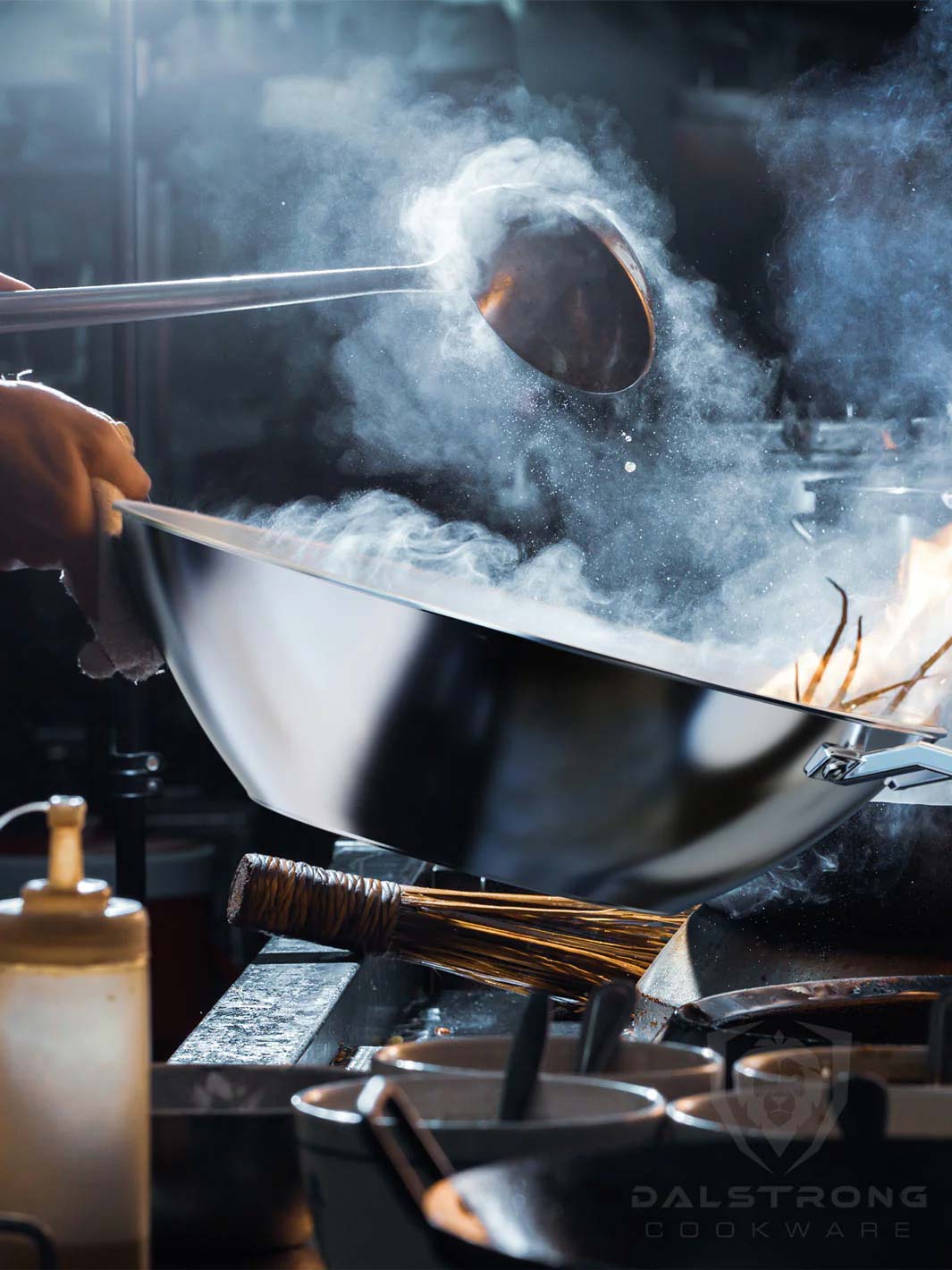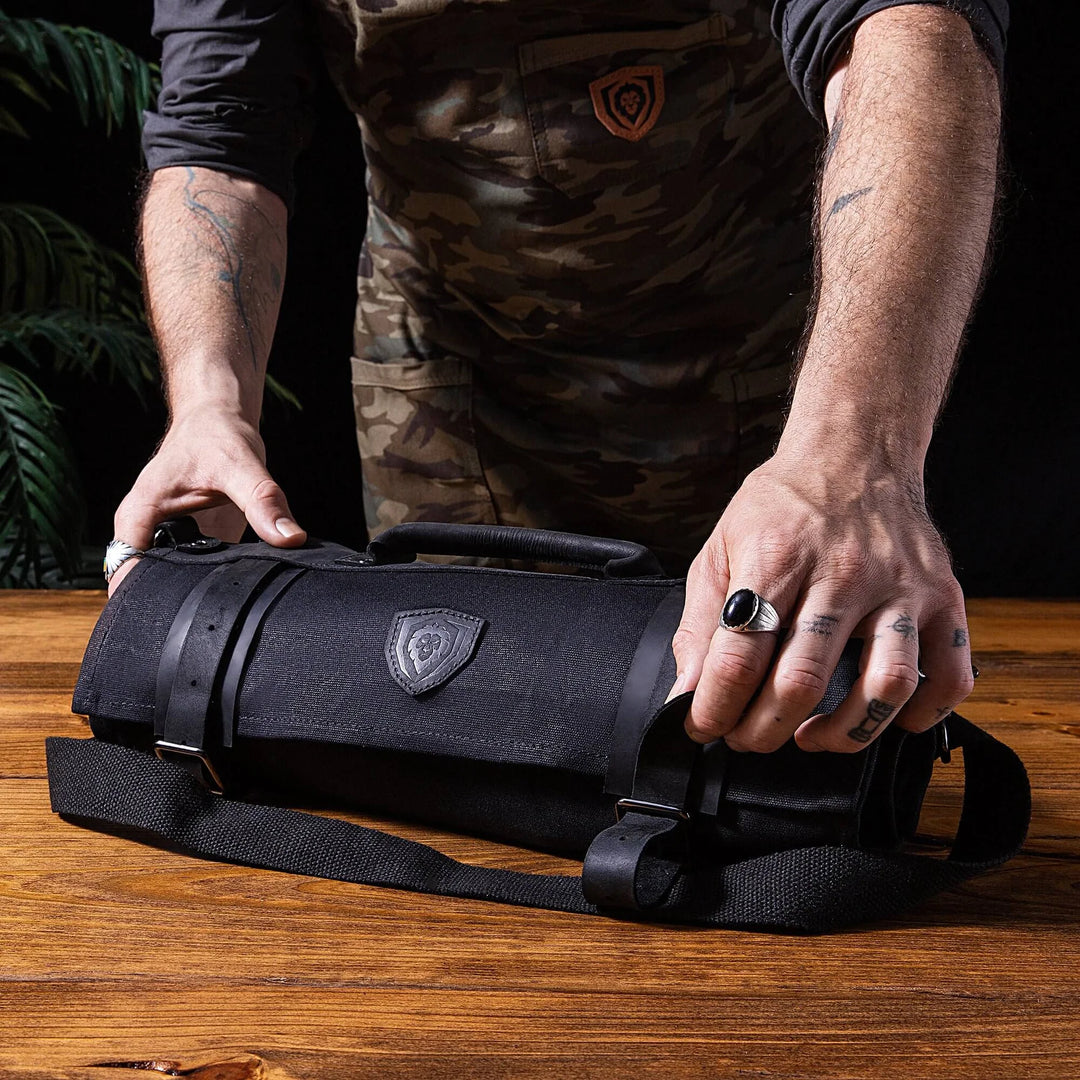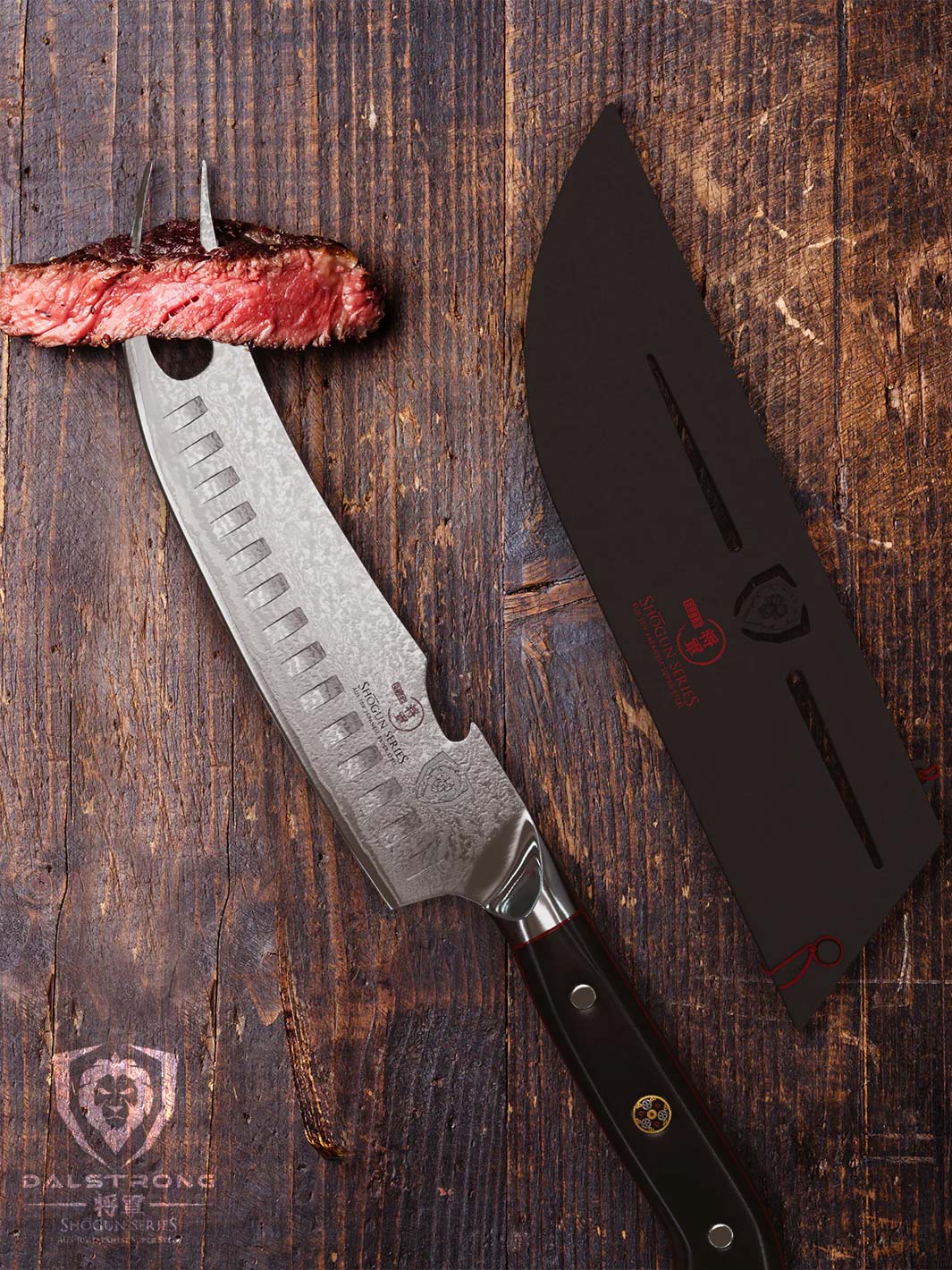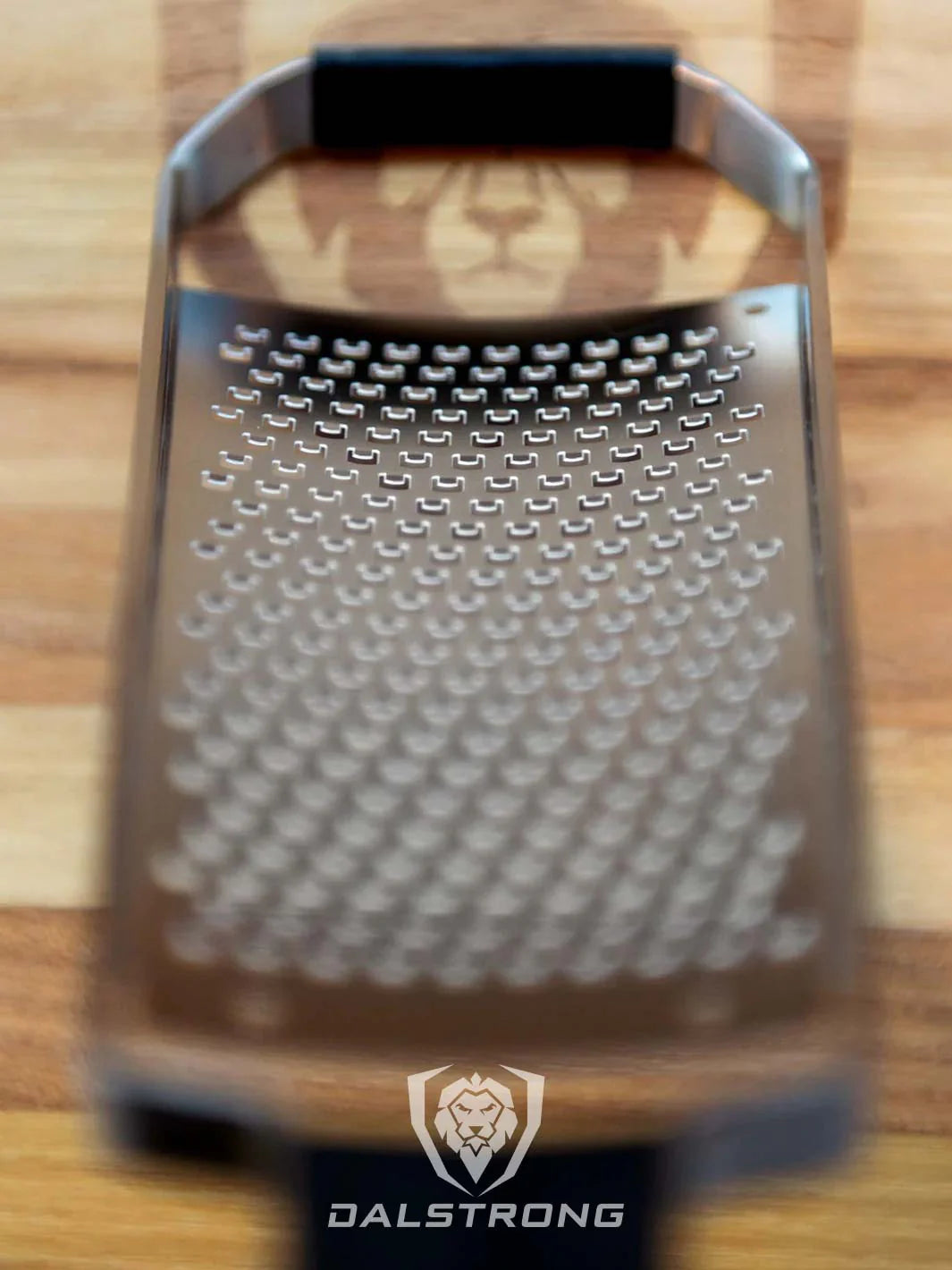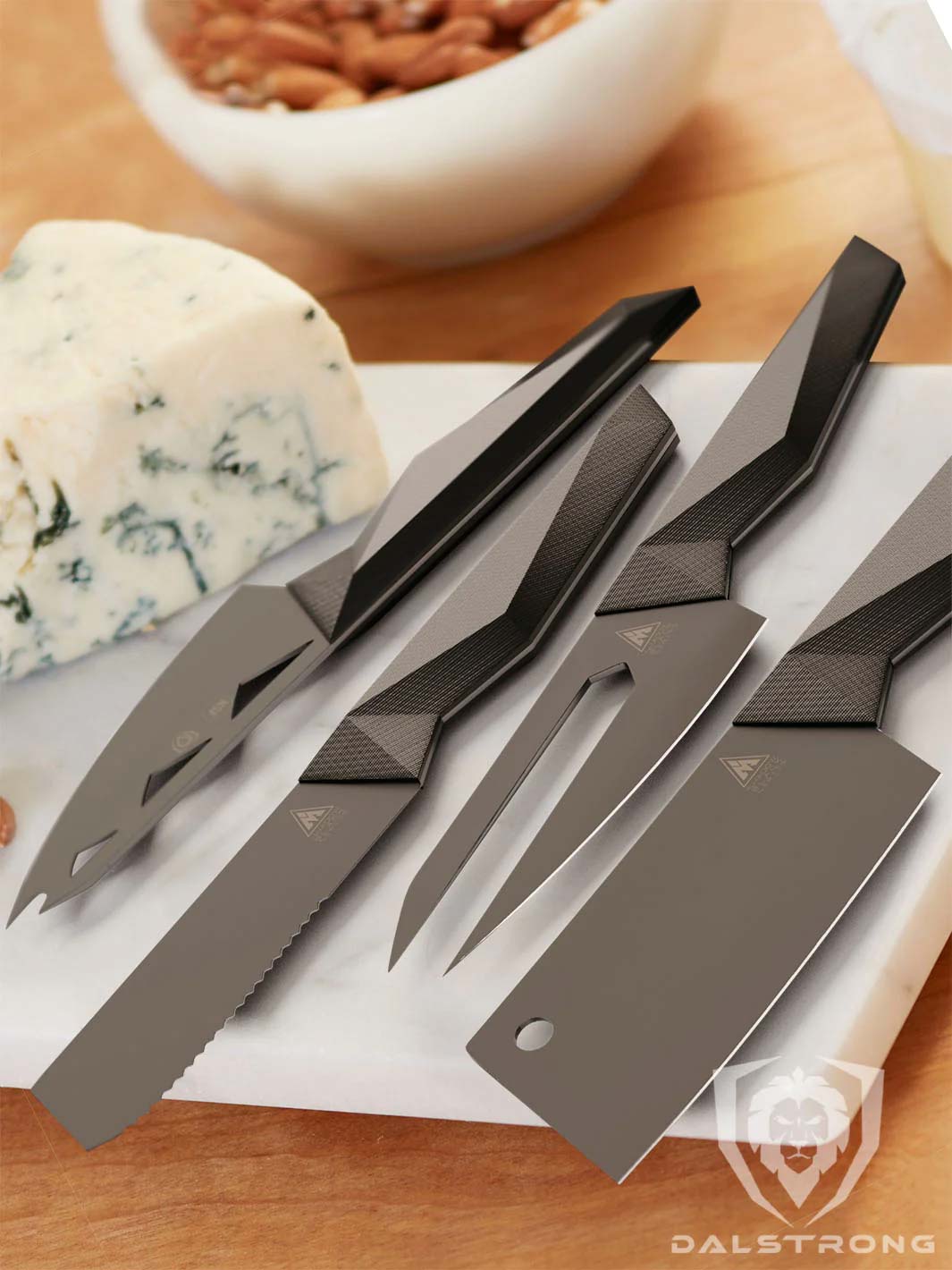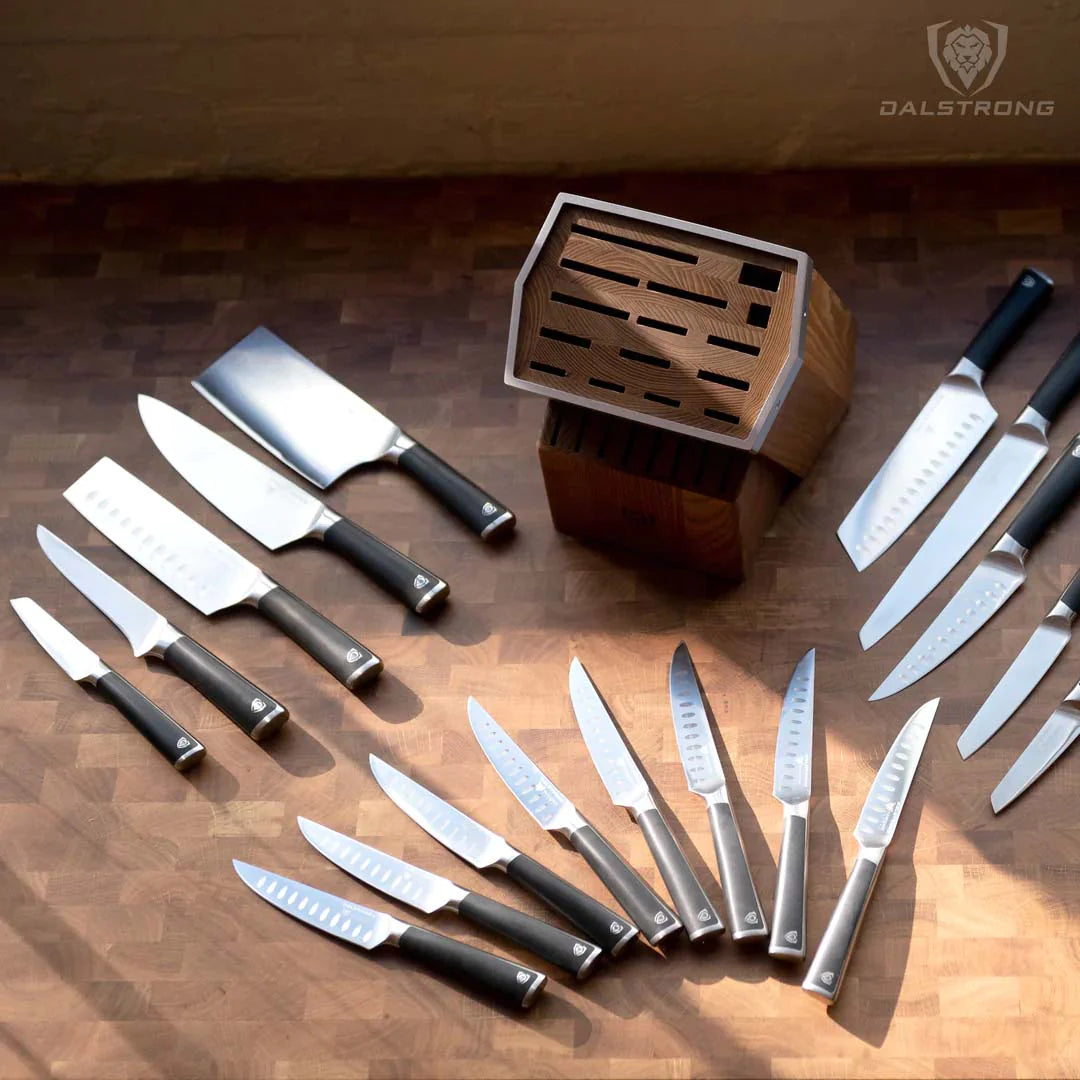The Best Knife Designs To Choose From
Gladiator Series 8-Piece Knife Block Set
When it comes to knives, there are various designs and blade types available to suit different purposes and preferences. Understanding the common knife designs and blade types can help you choose the right tool for your specific needs. And, in this blog, we’ll be doing exactly that. So, let’s get right into it!
1. Different Parts Of a Knife
Gladiator Series 8-Piece Knife Block Set
The parts of a knife play a crucial role in its design, functionality, and overall performance. Understanding the different components of a knife is essential for knife makers, enthusiasts, and users alike. Let's explore the various parts of a knife and how they contribute to its effectiveness:
Blade
Blade steels are the main cutting edge of the knife. It defines the knife's purpose, whether it's a chef knife, pocket knife, or tactical knives. Blades can vary in length, shape, and material. Different blade designs, such as drop point, tanto, or clip point, serve specific functions and cater to different cutting tasks.
Handle
The handle provides grip and control over the knife. It is usually made of various materials, including wood, G10, stainless steel, or synthetic materials. Knife maker handles can be customized to fit the user's hand size and ergonomic preferences. They may featured knives textures, contours, or patterns designs to enhance grip and comfort during use.
Tang
The tang refers to the part of the blade steels that extends into the handle. It provides stability and strength to the knife. There are different types of tangs, including full tang, hidden tang, or partial tang, each offering varying levels of durability and balance.
Bolster
The bolster is a thick metal portion located between the blade steels and the handle. It adds balance and weight to the knife, while also providing a smooth transition from the blade to the handle. Bolsters can be integral or separate, depending on the knife design.
Spine
The spine is on the other side of the cutting edge. It is typically thicker than the cutting edge and contributes to the overall strength and rigidity of the knife. The spine may feature notches or jimping for better control and grip during delicate tasks.
Edge
The edge is the honed portion of the blade that performs the cutting. The edge can be ground in various ways, such as a hollow grind, flat grind, or convex grind, depending on the desired cutting performance and style of the knife.
Point
The point refers to the tip of the blade. It can be sharp and fine for precise tasks or broader and stronger for heavy-duty applications. Different point styles, such as drop point, clip point, or spear point, offer distinct advantages for specific cutting needs.
Guard
Some knives, especially fixed-blade knives, may have a guard between the blade and the handle. The guard prevents the user's hand from sliding onto the blade during use, providing added safety and protection.
Handle Scales
Handle scales are the coverings or plates attached to the handle. They provide aesthetics, comfort, and insulation from the blade. Handle scales can be made from various materials, including wood, micarta, G10, or even bone or antler for custom knives.
Lanyard Hole
Many knives feature a small hole or slot in the handle called a lanyard hole. It allows users to attach a lanyard or cord for added security and convenience, preventing the knife from being dropped or lost during use or transport.
2. Common Knife Designs and Blade Types
Chef's Knife
A chef knife, also known as a cook's knife, is a versatile kitchen tool with a broad blade and a curved edge. It is used for a wide range of tasks, including chopping, slicing, dicing, and mincing ingredients. Chef's knives typically have blade lengths ranging from 6 to 10 inches, offering excellent control and versatility in the kitchen.
Folding Knife
A folding knife also referred to as a pocket custom knife, is a compact and versatile tool that can be effortlessly carried in a pocket or bag. It features a folding mechanism that allows the blade to be safely tucked away when not in use. Folding knives come in various designs, including slip joints, liner locks, frame locks, and lockback, providing different levels of security and ease of use.
Hunting Knife
Designed for outdoor enthusiasts and hunters, a hunting custom knife typically has a sturdy fixed blade with a sharp point and a slightly curved cutting edge. It is used for field dressing, skinning, and general campsite tasks. Hunting knives often feature a full tang construction for strength and durability.
Fillet Knife
Fillet knives are specialized knives used for filleting fish or deboning meat. They have thin, flexible blades that allow for precise control and maneuverability. Fillet knives come in varying lengths, with the most common being 6 to 9 inches, and are essential hand tools for anglers and professional chefs.
Read about the five tips for using fillet knife, here.
Santoku Knife
Originating from Japan, the Santoku knife is a versatile kitchen knife primarily used for slicing, dicing, and chopping. It features a shorter and wider blade than a traditional chef's knife, allowing for efficient and precise cutting motions. The word "santoku" translates to "three virtues," representing the knife's ability to handle meat, fish, and vegetables with ease.
Bread Knife
A bread knife is specially crafted for slicing bread and other baked goods. It features a long, serrated blade that allows for clean and effortless cutting through crusty bread without crushing or tearing the soft interior.
Cleaver
Cleavers are heavy-duty knives with thick, rectangular-shaped blades. They are primarily used for cutting through bones, meat, and tough ingredients. Cleavers often have a wide blade for crushing garlic or transferring chopped ingredients from the cutting board to the pan.
Paring Knife
Paring knives have a small, narrow blade with a pointed tip. They are ideal for precision tasks such as peeling, trimming, and intricate cutting. Paring knives are versatile hand tools in the kitchen and are often used in conjunction with a chef's knife for more intricate work.
Utility Knife
A utility knife serves as a multipurpose tool, bridging the gap between a chef's knife and a paring knife. It typically has a medium-sized blade that can handle a variation of cutting tasks, including slicing fruits, vegetables, and smaller cuts of meat.
3. Popular Dalstrong Knife Designs
1. Chef's Knife 8" Shogun Series ELITE | Dalstrong
This Dalstrong Chef’s Knife from the Shogun Series ELITE 8” AUS-10V with a tsuchime finish is the ultimate combination of supreme function and stunning elegance. The razor-sharp blade is made from AUS-10V Japanese super steel with exceptional edge retention, hand-finished to a mirror-polished edge at a highly acute 10 degrees per side. The G-10 Garolite handle provides superior control, comfort, and durability. With its exquisite design and craftsmanship, this chef knife is a true work of art.
PROS:
- Unparalleled sharpness with an 8-12° degree angle per side for effortless cutting.
- Excellent edge retention at 62+ Rockwell for long-lasting performance.
- Premium AUS-10V Japanese super steel core for superior strength and precision.
- Beautiful Damascus blade pattern and hand-polished spine for aesthetic appeal.
CONS:
- This chef’s knife has a higher price tag, but is a kitchen essential for any home cook or chef.
- This requires proper knife care and maintenance to maintain its exceptional performance and durability.
2. Fillet Knife 6" Frost Fire Series | NSF Certified
The sandblast finish on this 6” fillet knife from the Frost Fire series provides a unique "frosted" look and enhances the non-stick properties of the blade. The slender, ergonomic white resin handle, enclosed in aluminum mesh, ensures a tension-free grip and superior control. With its stunning design and superior performance, the Frost Fire Series is the perfect companion in any kitchen.
PROS:
- Scalpel-like sharpness at a 16-18° degree angle per side for effortless cutting.
- Excellent edge retention at 60-61 Rockwell for long-lasting performance.
- Premium quality materials and expert craftsmanship for durability and style.
- Lightweight construction for agility and comfort during prolonged use.
CONS:
- The appearance of this look is not every home cook or chef’s cup of tea.
- The aluminum mesh design of the handle requires extra knife care during cleaning.
3. Paring Knife 4" Delta Wolf Series | Dalstrong
This Delta Wolf Paring Knife is a reliable companion for daring chefs who strive to go further in the kitchen. With a razor-sharp, high-carbon stainless steel blade sharpened to 8-12 degrees, it excels at coring, mincing, peeling, and other intricate tasks. This knife is built to withstand rigorous action and is accompanied by a leather sheath for on-the-go protection.
PROS:
- Precision-forged high-carbon steel blade for exceptional sharpness and durability.
- Stylish titanium coating for added protection against corrosion.
- Durable and resilient G10 camouflage handle for stability and grip.
- Triple-riveted construction for maximum durability and display options.
CONS:
- The 4" blade length may not be suitable for larger cutting tasks.
- The camouflage pattern on the handle may not appeal to everyone's aesthetic preference.
4. Santoku Knife 7" Shadow Black Series | RED Edition | Dalstrong
This versatile Santoku knife can handle all slicing, dicing, and mincing tasks with ease. Inspired by the F-117 Nighthawk Stealth Fighter jet, the Shadow Black Series features sharp lines and deep, blood-red color in the Marauder edition. The handle offers the perfect grip and maneuverability you need during the chopping process, while the ruthlessly sharp edge provides clean, precise cuts.
PROS:
- Precision-forged high-carbon steel blade for superior sharpness and wear resistance.
- Unique blood red nonstick coating enhances durability and corrosion resistance.
- Ergonomic handle shape for maximum comfort and maneuverability.
- Stylish design inspired by the F-117 Nighthawk Stealth Fighter jet.
CONS:
- The 7" blade length may not be suitable for those who prefer shorter or longer blades.
- The bold design of this Santoku knife may not appeal to those who prefer more traditional knife aesthetics.
Introducing the Dalstrong Call of Duty Obliterator, a knife that brings the coveted Damascus blade pattern from the popular video game to life. Just like its in-game counterpart, this cleaver means business. Equipped with a durable rubberwood and steel stand for safe storage, this knife is ready for advanced culinary operations.
PROS:
- Features the rare and coveted Damascus blade pattern from the Call of Duty video game.
- Precision-forged high-carbon stainless steel blade for exceptional sharpness and performance.
- Rugged and strong digital camouflage G10 handle for a secure grip.
- Full tang blade with three ultra-secure rivets for maximum durability.
CONS:
- The cleaver design may not be suitable for those who prefer more versatile and general-purpose knives.
- The unique Call of Duty theme may not appeal to those who prefer more traditional knife designs.
4. Frequently Asked Questions
What is the most popular style of knives?
The most popular style of knives varies depending on personal preference and culinary traditions, but some popular styles include chef's knives, santoku knives, and paring knives. These versatile knives are commonly used in kitchens around the world for a wide range of cutting tasks.
What is a traditional knife?
A traditional knife refers to a knife design that has been passed down through generations and reflects the cultural and historical practices of a specific region or community. Traditional knives often have specific blade shapes, handle materials, and craftsmanship techniques that have been preserved over time.
What is the oldest knife design?
The oldest knife design is difficult to pinpoint exactly, as knives have been used by humans for thousands of years. However, one of the earliest known knife designs is the flint knife, which dates back to the Stone Age. These primitive knives were made by chipping or flaking flint or other hard materials to create a sharp cutting edge.
SHOP DALSTRONG KNIVES TODAY!








































































































































































































